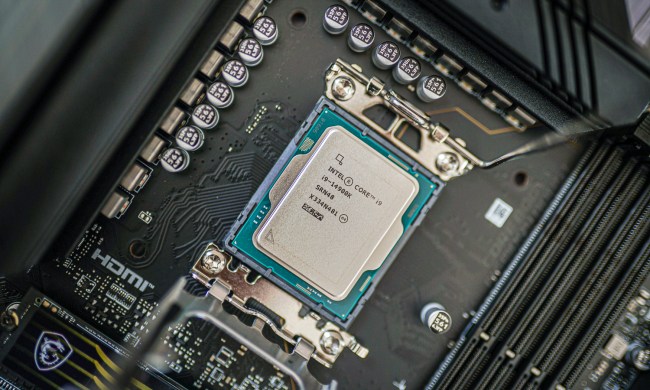
It’s been a busy Computex for Intel, but one of its most exciting announcements — at least for consumers — slipped a little under the radar. The company will soon expand its portfolio of desktop processors with the next-gen Arrow Lake, and we now have a rough idea of when CPUs will hit the market and how much of an improvement we can expect. Interesting bonus: Some of the new Z890 motherboards will support CAMM2 memory.
According to Wccftech, Intel is planning to officially unveil Arrow Lake in September during the Intel Innovation event, and the processors will launch shortly after, sometime in October this year. Desktop users are the lucky ones here, as they’re the ones who will get access to Arrow Lake first — laptop chips will follow at an undisclosed date. However, laptop users already get plenty to sink their teeth into with this year’s Lunar Lake.
We’re not sure about the extent of the initial lineup, but what we do know is that Intel’s changing its naming scheme in desktops too, so learning the new branding cannot be avoided at this point. Therefore, Arrow Lake CPUs will be referred to as the Intel Core Ultra 200 series, and some of the chips that we expect to see include the Core Ultra 9 285K, Core Ultra 7 265K, and Core Ultra 5 245K. Non-overclockable (non-K) versions will be launched later.
The Core Ultra 200 series will still feature a mix of efficient and performance cores, with Lion Cove P-cores and Skymont E-cores. Wccftech teases that the new P-cores will offer a 14% boost in instructions per cycle (IPC) compared to the previous generation, while the E-cores should provide an even more impressive upgrade of up to 38% in IPC. The clock speeds are still a mystery, but 5.5GHz and above seems like a safe bet. Lastly, we might see a lower TDP, reaching about 80% of the one found in Raptor Lake chips. This could result in a lower maximum clock speed or a lower ceiling for overclocking.

If you’re already running an Intel processor and you’re hoping to upgrade, bad news — Arrow Lake will use a new socket. Intel is switching to the LGA1851 socket, meaning that current-gen LGA 1700 motherboards won’t be compatible. However, Intel’s partners are already showcasing the new Z890 boards on the Computex show floor. One of the more interesting updates is that some of these motherboards support the new CAMM2 memory standard, which marks a big departure from the SO-DIMM interface we all know and use today.
Many manufacturers have high hopes for CAMM2 as a replacement for SO-DIMM. CAMM2 is thinner than SO-DIMM, it can activate dual-channel memory with just one module, and it’s capable of reaching higher speeds and tighter timings. It could also end up being a great alternative to soldered memory in laptops.
With Zen 5 processors coming out in July, Intel will be launching its next-gen CPUs a lot later. However, with a new socket and support for CAMM2 memory modules, Intel might still become an interesting alternative for those who want to build a new PC.




